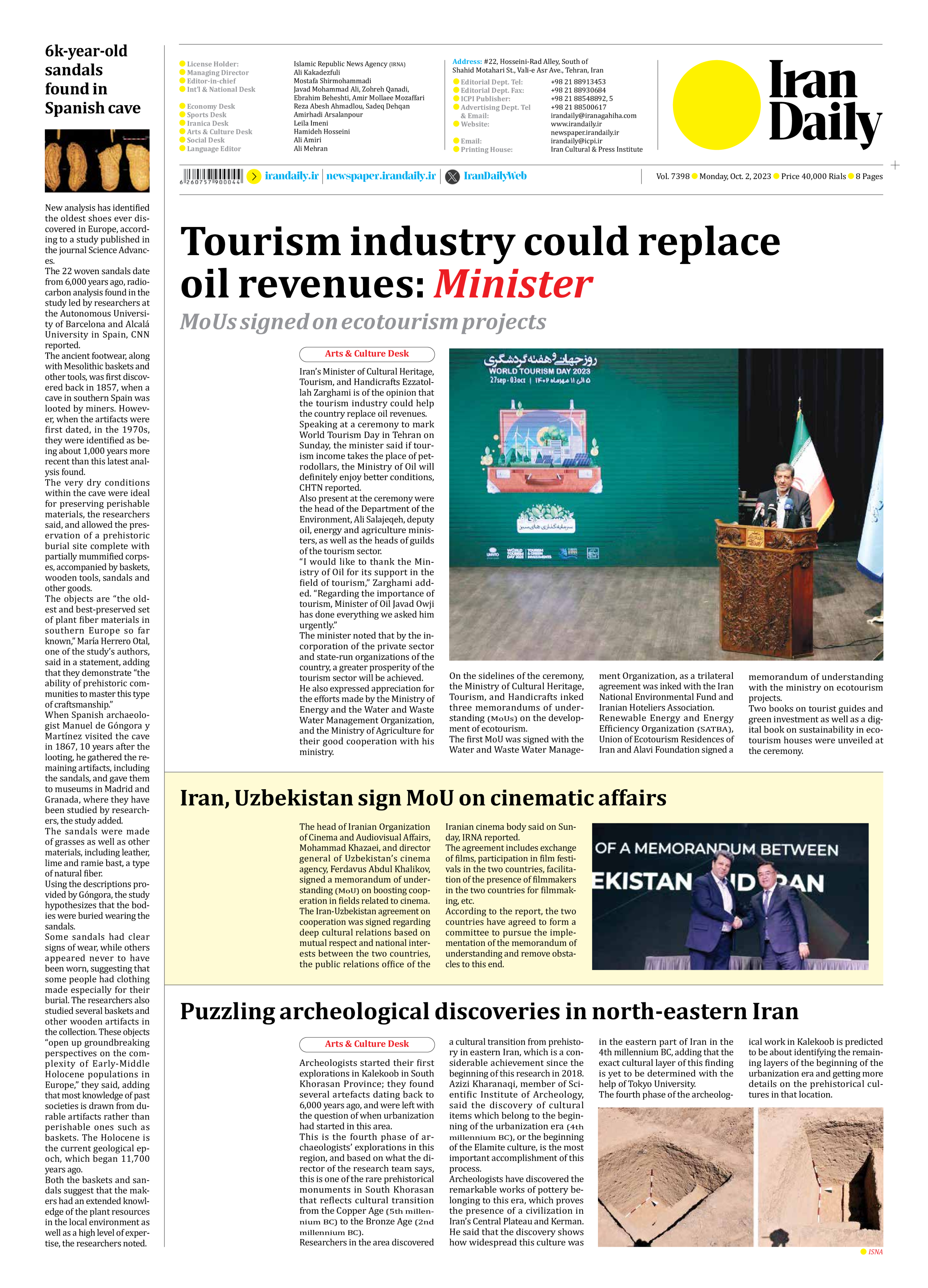
Puzzling archeological discoveries in north-eastern Iran
Archeologists started their first explorations in Kalekoob in South Khorasan Province; they found several artefacts dating back to 6,000 years ago, and were left with the question of when urbanization had started in this area.
This is the fourth phase of archaeologists’ explorations in this region, and based on what the director of the research team says, this is one of the rare prehistorical monuments in South Khorasan that reflects cultural transition from the Copper Age (5th millennium BC) to the Bronze Age (2nd millennium BC).
Researchers in the area discovered a cultural transition from prehistory in eastern Iran, which is a considerable achievement since the beginning of this research in 2018.
Azizi Kharanaqi, member of Scientific Institute of Archeology, said the discovery of cultural items which belong to the beginning of the urbanization era (4th millennium BC), or the beginning of the Elamite culture, is the most important accomplishment of this process.
Archeologists have discovered the remarkable works of pottery belonging to this era, which proves the presence of a civilization in Iran’s Central Plateau and Kerman.
He said that the discovery shows how widespread this culture was in the eastern part of Iran in the 4th millennium BC, adding that the exact cultural layer of this finding is yet to be determined with the help of Tokyo University.
The fourth phase of the archeological work in Kalekoob is predicted to be about identifying the remaining layers of the beginning of the urbanization era and getting more details on the prehistorical cultures in that location.







